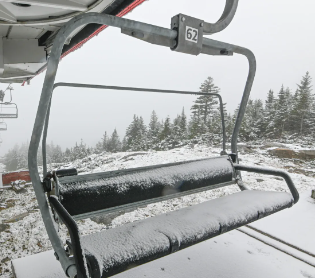Hello All!
As a moderate to strong (but warm) atmospheric river slams the PNW with rain and high elevation snow, our eyes are on the mid to long range forecast. While we have had our fair share of deep days this season, too often the snowstorms impacting the Western US have been accompanied by cool, but not cold, air. Further, the Pacific Northwest (PNW) is the only region with average or above average snowfall (See SWE map below and review this post for an explanation of what the map means). Finally though, in the mid to long range timeframe, we are seeing the forecast models show the coldest air of the season entering the US. This cold air is likely to be accompanied by a stormy pattern in the Western US, setting up the final 7 to 10 days of January as the first real opportunity for deep and cold storms across the region.

Please consider joining our custom Powder Concierge program to book your deepest days of the season. We offer specific forecasts that include timing, temps, winds, conditions, custom maps, and timing to nab your deepest days. This also supports our forecasts!
If you already are one of our concierge members, you would've read about the upcoming (now ongoing) Sudden Stratospheric Warming (SSW) event that we discussed in our newsletter at the beginning of the month. All you need to know is that during some Winters, very high up in the atmosphere, the region around the north pole warms up. The important consequence of this warming is that this cold air that WAS circling the north pole starts to move south to the mid latitudes, oftentimes the US. This first occurs high up in the atmosphere where the warming took place, but usually propagates downward into the altitudes that impact our weather. The aforementioned coldest airmass of the Winter that we expect to arrive later this month is a direct result of this Sudden Stratospheric Warming. These events aren't exceptionally well understood, and each event is unique, but the arrival of unusually cold air in the mid latitudes approximately 2 to 4 weeks following a SSW is common.
So the mid to long range forecast models have been picking up on this cold air intrusion for several days now. The exact location of the coldest air, whether the western, central, or eastern US, is still to be determined. At this point though, what we want to see is consistency amongst the long range models in the upper level circulation pattern. So let's take a look at that.
We will look at the ensemble forecasts from the American, European, and Canadian models. Below we show the upper level pattern, for each model, first for January 21st. You can see that all models are showing the storm track over the Western US, with a ridge off the west coast.

(Image courtesy of Weatherbell)
There is pretty good model agreement for being 10 days out. This would likely result in a storm track farther east than what we have seen most the winter, one that impacts the intermountain west more than the PNW. Looking even farther out, at January 26th, the upper level patterns from the three models are below.

(image courtesy of Weatherbell)
Once again, there is remarkable agreement for this being so far out in the future (2 weeks). All three models, like the previous image, have a trough over the Western US. The ridge off the coast has retrograded West and thus the storm track has shifted west too. This track would likely favor the PNW but with colder air and more amplification, regions to the south and east would have a better shot at snow. Overall, this type of agreement at these timescales gives us a fair amount of confidence.
We have been waiting all season for some cold air and deep, great snow quality storms. The last week of the month definitely has the potential to finally deliver this. We will update you often as we move through the month.
In the meantime, check out @lstone84 on instagram for a peak into how some of the chases thus far have paid off.


























